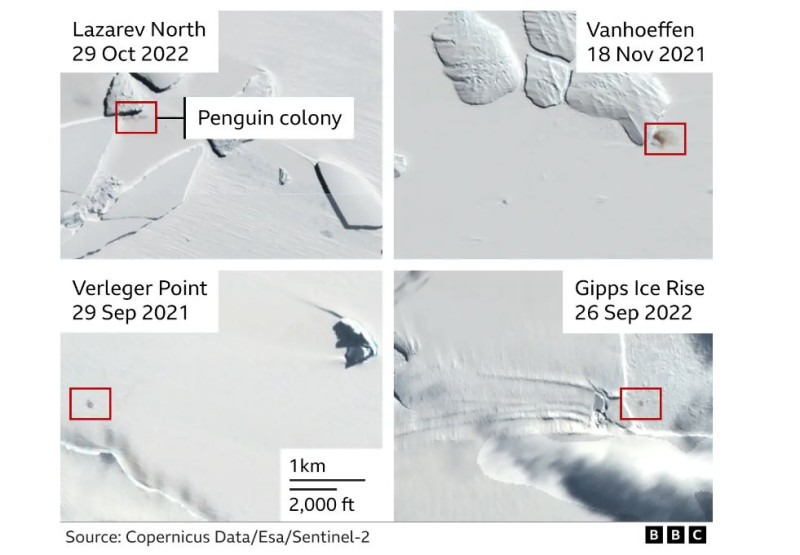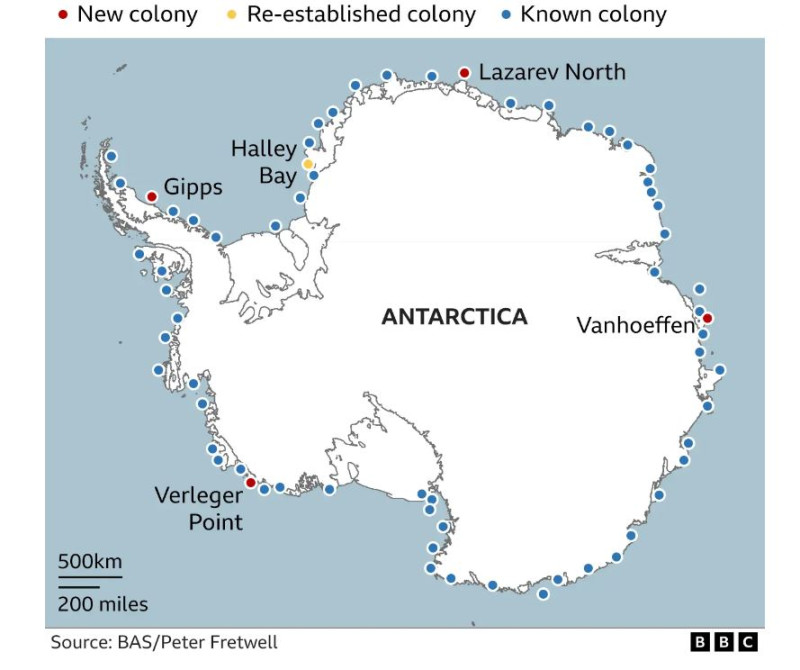This is vital information for researchers monitoring a species under increasing pressure from climate change
Four new colonies of emperor penguins have been spotted in Antarctica by satellite images. Thus, the number of known nesting sites around Lefki Epirus amounts to 66.
With these discoveries, scientists believe they now know where all the remaining breeding pairs in the world are.
This is vital information for researchers monitoring a species under increasing pressure from climate change.
Emperor penguins court, mate, lay and hatch eggs and then raise their young on the sea ice attached to the shore.
But this type of ice has declined in parts of Antarctica and has become more volatile, certainly in recent years, raising a big question mark about the species’ long-term viability in an ever-warming world.
Emperor penguins are the largest penguin species, standing over 1 meter tall. They live in extreme conditions, coming together during the Antarctic winter to breed in separate groups.
These colonies tend to be about 250 kilometers (150 mi) apart on average. Scientists have used satellites to search the gaps at this distance for birds they didn’t know about – and believe all significant colonies have now been identified.
The four new locations are welcome news, even though they add just a few thousand extra people to a total population estimated at around 550,000.
“It’s good that even when emperor penguins are affected by changing ice conditions, we still find colonies”stated Dr. Peter Fretwell by the British Antarctic Survey (BAS).
“But it’s also clear that these birds will have to be adaptable, moving to new locations as ice conditions continue to change, and we’re seeing evidence of that,” he told BBC News.
At least one of the newly discovered colonies – named Lazarev North – is likely a group of birds that were forced to leave a nearby area to settle in a more favorable habitat. The new Gipps colony also shows evidence in the satellite record that it has changed position over time. The two other sites, at Verleger Point and Vanhoeffen, appear to have had a more permanent history.
Antarctica’s size and remoteness make observation from space the only practical approach. Colonies are identified by the stain left by guano (their feces) on the white ice. If the birds gather in large enough numbers, this coloration will be visible even from space.
Source: Skai
I have worked as a journalist for over 10 years, and my work has been featured on many different news websites. I am also an author, and my work has been published in several books. I specialize in opinion writing, and I often write about current events and controversial topics. I am a very well-rounded writer, and I have a lot of experience in different areas of journalism. I am a very hard worker, and I am always willing to put in the extra effort to get the job done.












